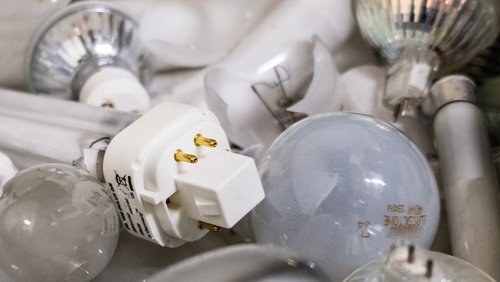Waste lamp recycling life cycle assessment

With the help of the life-cycle assessment, the potential effects of possibly changed limits for mercury contents on the disposal paths were illustrated and environmental interactions were also shown.
Due to close cooperation with the operators of treatment plants, a very good database was available to describe the fractions from the treatment, which was linked with secondary data as part of the life-cycle consideration to describe the disposal chain.
The main objective of waste lamp treatment is to remove mercury from the materials used to produce the lamps. The existing waste lamp recycling system achieves very high mercury separation. More than 95 % of the mercury contained in the waste lamps is removed from the material cycle in fractions for disposal (e.g. phosphor powder, adsorbents). Around 90 % of the lamp materials can therefore be recycled after treatment. In particular, due to the recycling, the treatment of almost 8,000 t waste lamps in Lightcycle’s take-back system means approx. 7,000 t CO2 equivalents impact the environment.
Setting tighter mercury limits for fractions from the treatment could lead to the displacement of treatment fractions, which have been recovered until now, in the removal. Alternatively, thermal after-treatment of fractions contaminated with mercury is feasible, so that they can continue to be added to a recovery process.
Regarding mercury emissions in air, the setting of very tight limits and limits at the level of EN 50625-2-1, which reflects current state-of-the-art technology, would lead to a reduction of a few kilograms of mercury per year. This quantity will continue to reduce in the next few years due to falling quantities of lamps to be treated and the reducing quantity of mercury in the lamp mixture to be treated.
You want more information?
You are welcome to contact me:
Thorsten Pitschke
![[Translate to Englisch:] Placeholder](/fileadmin/_processed_/e/b/csm_Header_Projekte_603d83e502.jpg)